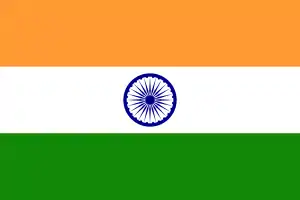Luso-Indian
Luso-Indian or Portuguese-Indian, is a subgroup ethnicity from Luso-Asians and are people who have mixed varied Indian subcontinent and Portuguese ancestry or people of Portuguese descent born or living in the Republic of India and the world. Most of them live in former Portuguese overseas territories of the Estado da India which are currently a part of the newly formed independent nation as a Union in 1947 called the Republic of India from British raj. Luso-Asians of the Indian subcontinent are primarily from Goa, Mangalore, Daman and Diu, Korlai (Chaul), Bassein, Silvassa, Tamil Nadu and Kerala.[1][2]
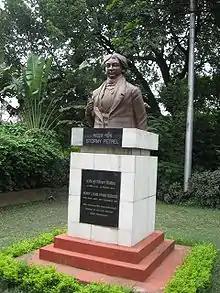 | |
| Regions with significant populations | |
|---|---|
| Goa · Vasai · Daman and Diu · Dadra and Nagar Haveli · Kerala · Tamil Nadu | |
| Languages | |
| Predominantly: Portuguese, including Daman and Diu Portuguese& Korlai Indo-Portuguese and other Indo-Portuguese Creoles · Konkani · English Minority: Malayalam · Tamil · Marathi · Kannada · Other Indian languages | |
| Religion | |
| Roman Catholicism | |
| Related ethnic groups | |
| Portuguese Burghers · Goan Catholics, Mangalorean Catholics, East Indian Catholics, Daman and Diu Portuguese |
History
Early history
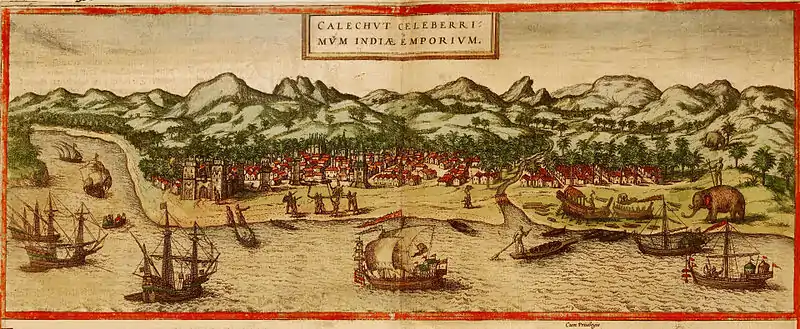
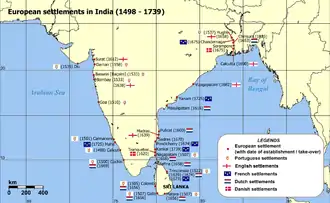
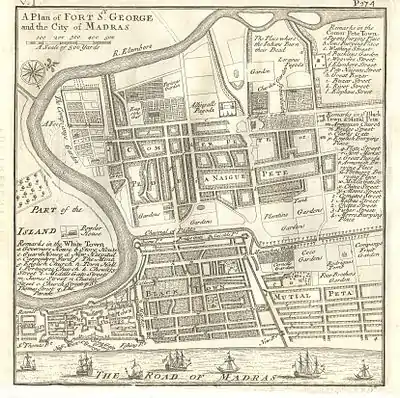
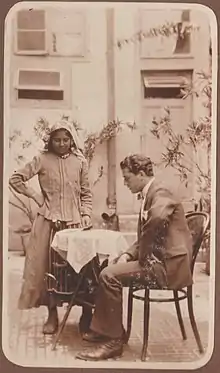
In the 16th Century, a thousand years after the collapse of the Western Roman Empire, the Portuguese became the first European power to begin trading in the Indian Ocean.[3] They were in South India a few years before the Moghuls appeared in the North. In the early 16th century, they set up their trading posts (factories) throughout the coastal areas of the Indian and Pacific Oceans, with their capital in Goa in South West India on the Malabar Coast.
In 1498, the number of Europeans residents in the area was merely a few tens of thousands. By 1580, Goa was a sophisticated city with its own brand of Indo-Portuguese society. Early in the development of Portuguese society in India, the Portuguese Admiral Afonso de Albuquerque encouraged Portuguese soldiers to marry native women and this was termed as Politicos dos casamentos.
The Portuguese also shipped over many órfãs d'El-Rei to Portuguese India, Goa in particular. Orfas del Rei literally translates to "Orphans of the King", and they were Portuguese girls sent to overseas territories to marry either Portuguese settlers or natives with high status.
Arrival of other Europeans
The English, French and Dutch East India Companies became active in Far East trading in a meaningful way about a hundred and fifty years after the Portuguese. They too set up their posts throughout the Indian Ocean. By the middle of the 17th century there were several thousand Portuguese and Luso-Indians in India and a relatively small population of other Indian-Europeans. By the end of the 17th century, the East India Companies had established three major trading posts in India – Fort St. George (Chennai), Fort St William (Kolkata) and Bombay Island. In 1670, the Portuguese population in Madras numbered around 3000.
Madras under British Raj
In the 17th century, Portuguese Jews from Amsterdam and London were coming to Madras as settlers and traders.[4] One of the first Jews who came to Madras with special permission to reside and trade there was Jacques (Jaime) de Paiva (Pavia), a Portuguese Jew, Paradesi Jew who convinced the English authorities to permit Jews to settle in Madras and he was the one who organised the Jews into the semblance of a community. On a plot of land in the suburbs he established a Jewish cemetery. The East India Company used Portuguese Jews based in Madras in its diplomatic efforts to expand English trading.
By the mid-eighteenth century most Portuguese Jews had emigrated to London, leaving very few in Madras. Some of them moved within India in Pune, Maharashtra and carried their surnames as Paradesi/Pardeshi Jews. Now there are only 2 Portuguese Jews in Madras[5] The gravestones of the old Jewish Cemetery Chennai were moved to the Central Park of Madras in 1934 with the gate of the cemetery on which is written "Beit ha-Haim" in Hebrew letters, the last vestige of Jewish presence in Madras in the seventeenth century.
Portuguese speaking communities in Republic of India
Korlai
Korlai is central to a small thriving community of Indo-Portuguese Christians, settled for nearly 500 years on the western coast of India at Chaul near Mumbai. This is one of the only unique 16 century Portuguese speaking community in India today, where the language has over the decades metamorphosed to Korlai Portuguese creole, a variant mix of the 16th century Portuguese & local Indian languages. The Portuguese left Korlai & Chaul around 1740 & the language also survived due to Portuguese speaking priests, as the priestly diocese was under Goa till early 1960s. It has vigorous use and it is also known as Kristi ("Christian"), Korlai Creole Portuguese, Korlai Portuguese, or Nou Ling ("our language" in the language itself). The small surviving community of a 1600 strong population is an excellent specimen of the cultural diversity, integrity and the extensive trade links of historical India. The place also boasts to be an area where Christian, Hindus, Muslims & Jews have been living together in harmony since centuries within the same region & yet proudly relate themselves as Indians today.
Goa
Goa was the capital of a large Portuguese eastern empire and was called "Rome of the East". The area has a diverse history resulting in a rich diversity of ethnicities. One of the those communities is the Luso-Goans whose story is connected with the arrival and conquering of Goa by the Portuguese explorers and Iberian sailors. Luso-Goans ethnicity could be of part European, or multiple part European or dominant Asian gene with primarily Mughal or Goud Saraswat Brahmin origins, while some are of Luso-African-Goan (Multiple-ethnicities) due to Goa's contacts with the African territories of Portugal and the British African colonies. Luso-Goans spoke Konkani and Portuguese with present generation adding English as well, and write Konkani in the Latin alphabet. Portuguese was the language of overseas province governance, however it is now spoken only by a small segment of the upper-class families and about 3 to 5 per cent of the people still speak the official language of 450 years inclusion (estimated at 60,000 to 90,000 people). The last newspaper in Portuguese ended publication in 1980s (i.e. O Heraldo switched from Portuguese to English overnight in the mid Eighties). However, the "Fundação do Oriente" and the Indo–Portuguese Friendship Society (Sociedade de Amizade Indo-Portuguesa) are still active. At Panaji many signs in Portuguese are still visible over shops, administrative buildings etc. although the 20th century Republic of India invasion and annexation of Goa termed as Indian annexation of Goa has changed the names. There is a department of Portuguese language at the Goa University and majority of Luso-Goan students choose Portuguese as their third language in schools. English is spoken as a first language by all upper class Goans. Luso-Goans have a choice to either be fully Portuguese citizens or fully Indian citizens or fully Portuguese citizens with an OCI (Overseas citizenship of India) granted by the Indian nationality law.
The Majority of Luso-Goans from the past noble hierarchy have a well documented family history and heritage recorded and maintained in various archives at Portugal, Goa, Brazil and Britain and many are directly descended and related to royal lineages of Europe and Asia. During the absolute monarchy, nobles of Goa enjoyed the most privileged status and held the most important offices after members of the Kingdom ruling dynasty and major hierarchy of the Roman Catholic Church. With the introduction of the constitutional monarchy in 1834, the influence of Portuguese Kingdom and its Empire nobles substantially decreased, although the erosion of their power had begun to accelerate from the time of the prime minister, the Marquis de Pombal, in the mid-18th century. After Portugal became a republic in 1910, some Luso-Goan descendants of the nobility at Goa continued to bear their families' titles according to standards sustained by the Portuguese Institute of Nobility (Instituto da Nobreza Portuguesa), traditionally under the authority of the head of the formerly ruling House of Braganza.
Elsewhere
In the Coromandel Coast, Luso-Indians were generally known as Topasses. They were Catholics and spoke Portuguese Creole. When England began to rule in India, they began to speak English in place of the Portuguese and also anglicised their names. They are, now, part of the Eurasian community. In Negapatam, in 1883, there were 20 families that spoke Creole Portuguese. There are currently about 2000 people who speak Creole Portuguese in Damão while in Diu the language is nearly extinct. About 900 monolingual people currently speak Creole Portuguese in Korlai. In Kochi, Luso-Indians now number about 2,000. There are also a few Catholic families with Portuguese surnames in Kochi, Kannur, Tellicherry, Trivandrum and Calicut (no longer in Mahé). Among them English replaced Portuguese creole as their family language one, two or three generations ago, so they usually claim that they are Anglo-Indian (or Eurasian) instead of Portuguese, as would have been the case up to the 19th century. In North India, Luso-Indians are only present in Kanpur. During 18th century Kanpur was an important Portuguese trade centre and had large Portuguese population which declined after colonization by British forces. Portuguese form the large ethnic group among Ethnic communities in Kanpur at present.
Bondashil, located in the Badarpur district of South Assam, had a Portuguese settlement of about 40 families back in the 17th century. Other in Rangamati in Goalpara district of Assam and Mariamnagar on the outskirts of Tripura’s capital Agartala.[6]
Portuguese-speaking communities pre-independence British Raj India
Numerous Luso-Indians and Luso-Goans were based in large cities of the Raj with the majority in Mumbai, and a smaller number in Karachi[7] and other Indian cities. In the decades following the formation of Pakistan many Goan left for better economic opportunities in the West or the Persian Gulf countries.[8] Many Anglo-Indians resided at Karachi as well and often married Luso-Asians. The descendants are part of a minority community and are Pakistani citizens and cannot visit their ancestral family homes at Goa post the 1961 Indian annexation of Goa with ease.
Luso-Indians, Luso-Goans outside the Republic of India
During Portuguese governance in parts of today's Republic of India, many Luso-Indian, Luso-Goan mestiços left the Indian subcontinent for other Portuguese territories and colonies for purposes of trade. Some also became Roman Catholic missionaries in Macau, Indonesia and Japan. One such mestiço was Gonsalo Garcia, a Catholic saint who was martyred in Japan in 1597.[9] Other Luso-Indians went to Macau, then a Portuguese colony, where they intermarried into the local Macanese population. Goan mestiços are among the ancestors of many Macanese today. Before heading to Macau, Luso-Indians migrated to Malacca, Singapore, and Indonesia. Still other Luso-Indians went to Portuguese Mozambique. Known members of the Luso-Indian Mozambican community are Otelo Saraiva de Carvalho, a leader of the Carnation Revolution against the Estado Novo in Portugal, Zeinal Bava, and Orlando da Costa, a writer who was born in Mozambique and lived until the age of 18 in Goa.
During the days of the British empire, many Goans migrated to the British ruled regions in East Africa such as Kenya, and Uganda.[10] The mestiço children of wealthy Portuguese men were often sent to Portugal to study. Sometimes they remained there and established families. Many Portuguese-born mestiços became prominent politicians, lawyers, writers or celebrities. Alfredo Nobre da Costa, who was briefly Prime Minister of Portugal in 1978, was of partial Goan descent on his father's side. Similarly, António Costa, the Prime Minister of Portugal since 26 November 2015, is one-quarter Goan through his father, Orlando da Costa. Television presenter Catarina Furtado is also part Indian.
Following the 1961 Indian annexation of Goa, many ethnic Portuguese living in Goa, as well as Goan assimilados and mestiços or Luso-Indians fled Goa for Portugal, Brazil or Portuguese Africa, others continued to live in Goa which is under the statehood of the Republic of India.
Luso-Indians & Luso-Goans
- Anthony Firingee – Bengali language folk poet (b. 1786)
- Casimiro Monteiro – PIDE agent who carried out the high-profile assassinations of Portuguese politicians, Humberto Delgado and Eduardo Mondlane (b. 1920)
- Henry Louis Vivian Derozio – Indian teacher and poet (b. 1809)
- Gonsalo Garcia – Roman Catholic saint (b. 1556)
- Juliana Dias da Costa – Harem-Queen to the Mughal emperor of India Bahadur Shah I (b. 1658)
- Garcia de Orta- Physician and naturalist (b. 1501/1502)
- Andrew (Anthony) Surrao- Veteran, Trichy, Tamil Nadu.
References
- : Countries and Their Cultures – Europeans in South Asia
- Charles, H. (2011). A history of the inquisition of Spain: And the inquisition in the Spanish dependencies. I. B. Tauris.
- : Indo Europeans – Europeans in India
- : THE PORTUGUESE JEWISH COMMUNITY OF MADRAS, INDIA, IN THE SEVENTEENTH CENTURY
- http://www.dtnext.in/News/City/2016/05/09232326/Chennais-link-to-its-Jewish-past-cemetery-in-Mylapore.vpf
- https://www.deccanherald.com/content/573545/more-bengalis-portuguese.html
- (Lisbonne), publ. avec les concours du CNRS (Paris) et de la Comissão nacional para as Comemorações dos descobrimentos portugueses (2000). Lusophonies asiatiques, Asiatiques en lusophonies. Paris: Karthala. p. 425. ISBN 978-2845861466. Retrieved 1 December 2017.
- Gabriel, Theodore (2007). Christian citizens in an Islamic state : the Pakistan experience. Aldershot, Hants, England: Ashgate Pub. pp. 14, 19, 22. ISBN 978-0754660361.
- Stubbe, Hannes; Pereira, Óscar G.; Borges, Charles J. (Editors) (2000). Goa and Portugal : history and development. New Delhi: Concept Pub. Co. p. 145. ISBN 81-7022-867-0.CS1 maint: extra text: authors list (link)
